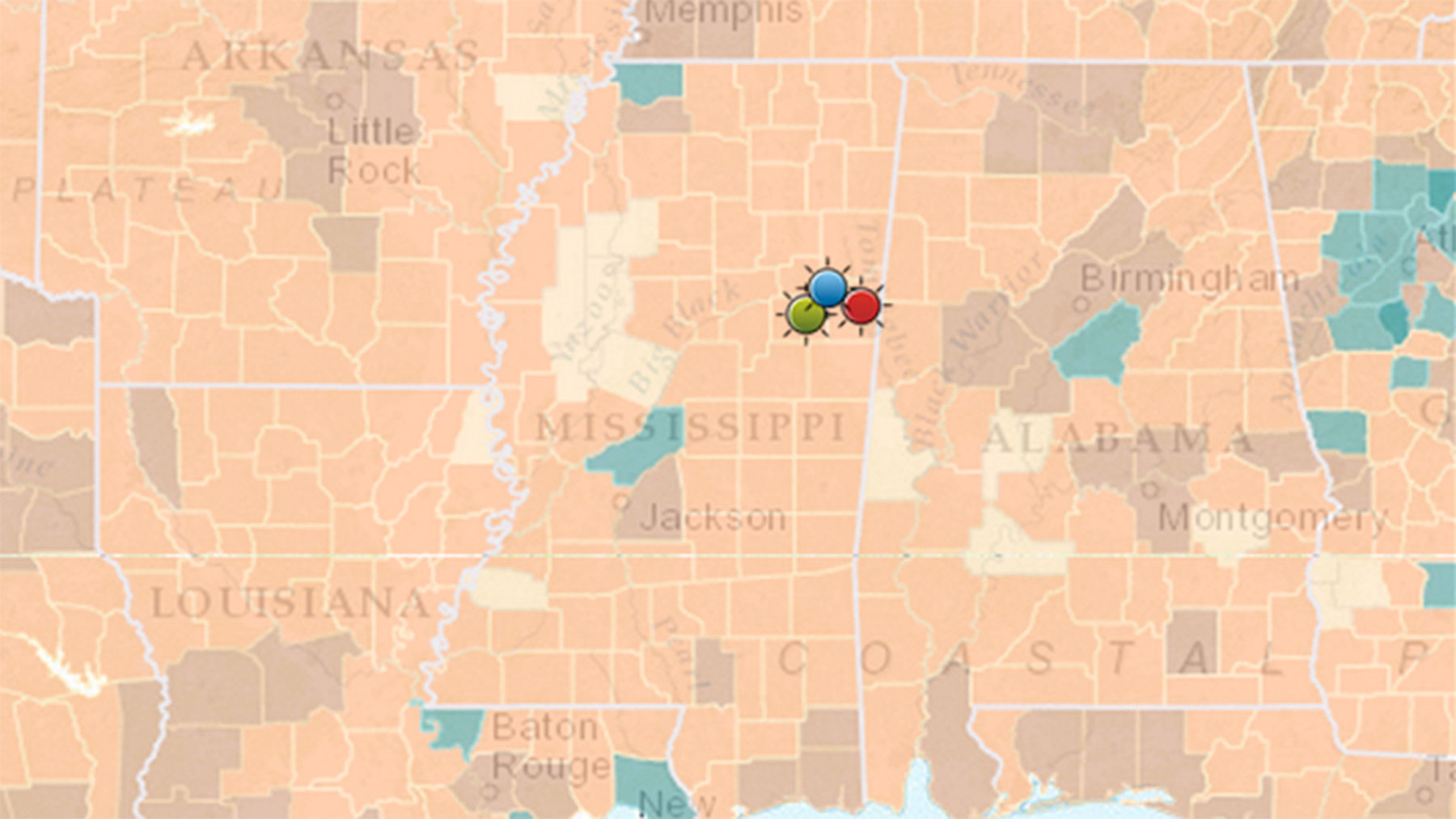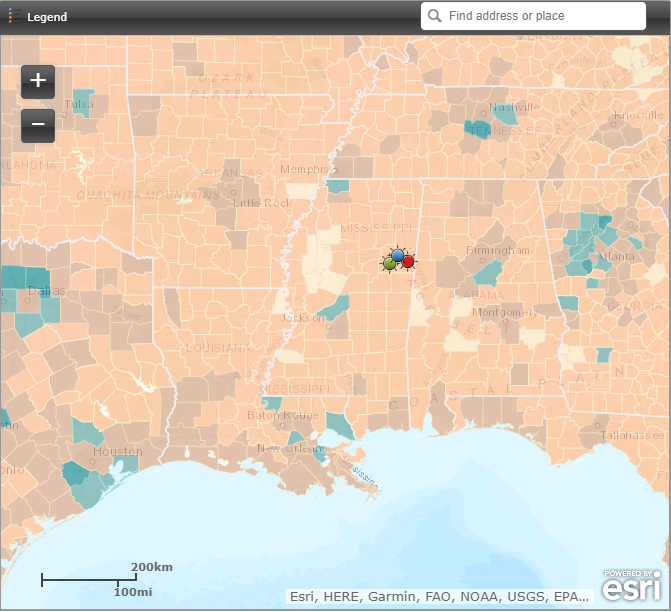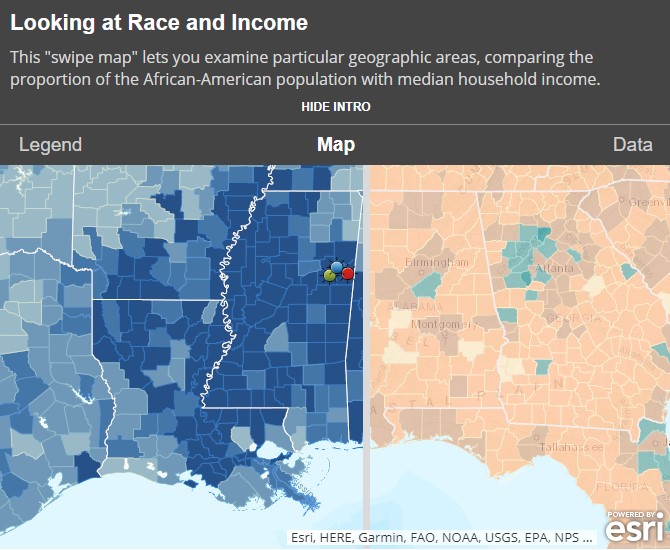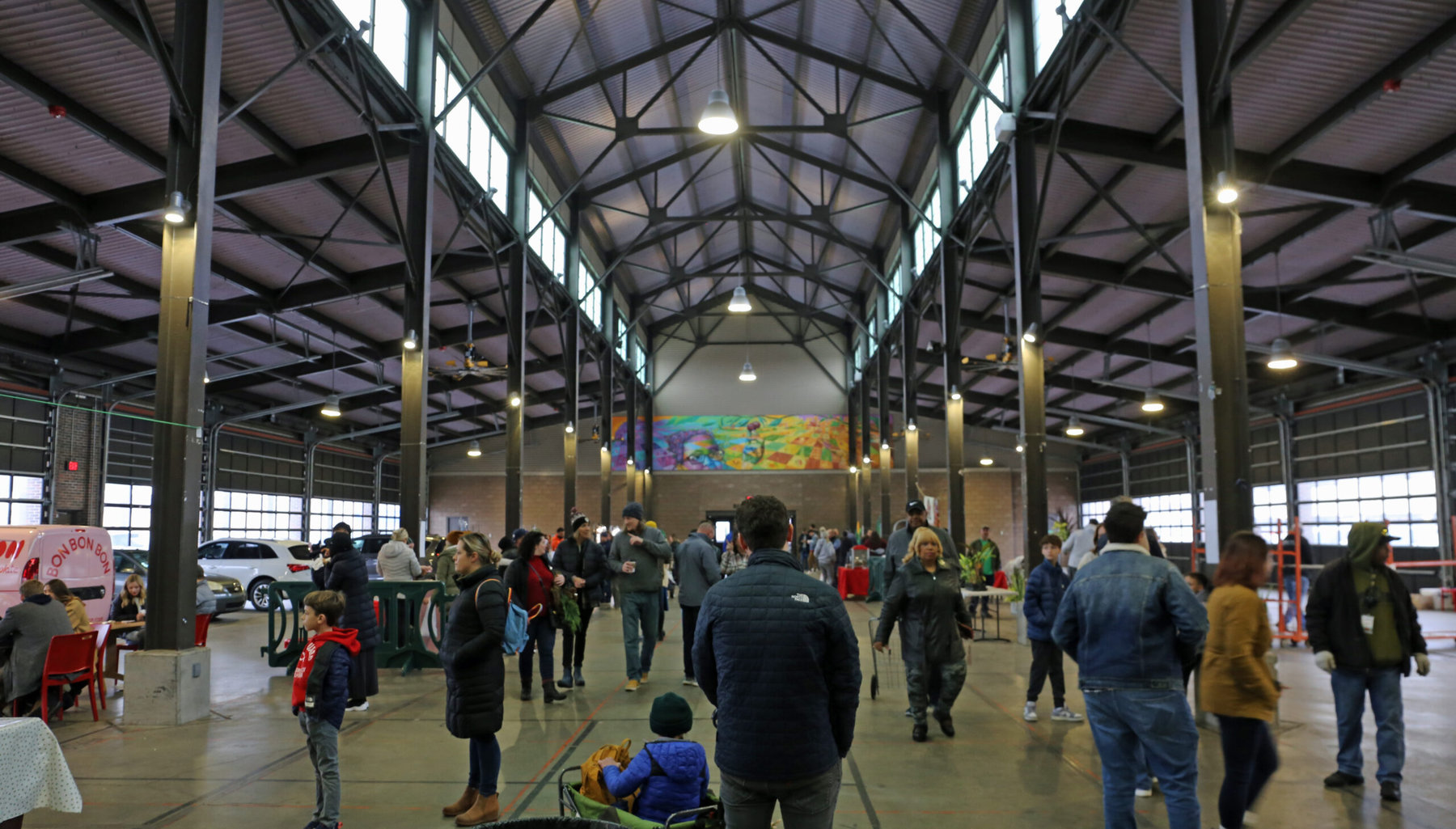Now, with help from John Tierney, here are interactive versions of three maps that put the state’s challenge in perspective.
The first map is the one used for the previous post’s screen shots. It shows the median household income of any given area, compared with the national median of just over $50,000. The bluer and darker the color, the richer the households in that area. The lighter the coloring, the poorer. The further in you click, the finer-grained the classifications you will see — again, for anyplace, not just Mississippi. (The three dots on the maps are the three cities of the Golden Triangle: red for Columbus, blue for West Point, and green for Starkville.)
With this mapping technology, we can produce “swipable” maps, in which you can move a slider back and forth and compare different patterns or time periods. The correlations between income and race are striking—as, of course, Ta-Nehisi Coates has been demonstrating. Update: and now John Tierney has produced one of these illuminating swipe maps. It is below. Click on “Hide Intro” to see more of the map. Then move the slider back and forth to see how racial patterns correlate with economic ones. The two sides of the map will zoom and pan in sync. When you’re done with the South, try Washington DC, or Chicago. You’ll see some very clear patterns.
Also, Ta-Nehisi Coates’s article is about the 21st-century living influence of slave-holding patterns from the 17th century onward, plus the 19th and 20th century history of Jim Crow and segregation. This screen shot of America’s current racial distribution, zoomed out to regional scale, underscores his point. The areas with the greatest concentrations of African-Americans now are the areas where their forebears were brought and worked as slaves.
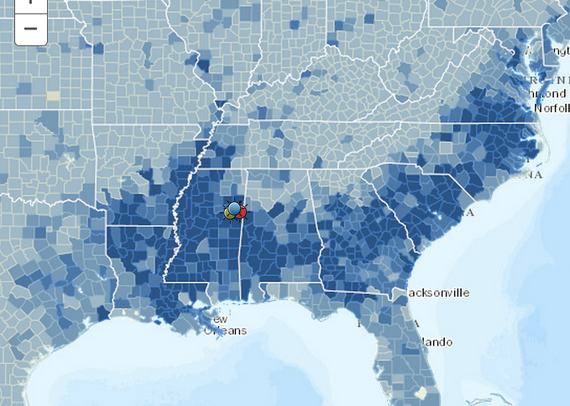
That is the mapping installment for today. Next: what has gone right in the Golden Triangle’s approach, and what (if anything) might be wrong with it.
And since today is Memorial Day, please see Deb Fallows’s post on the connections among this holiday, the city of Columbus, Mississippi, and our magazine.

